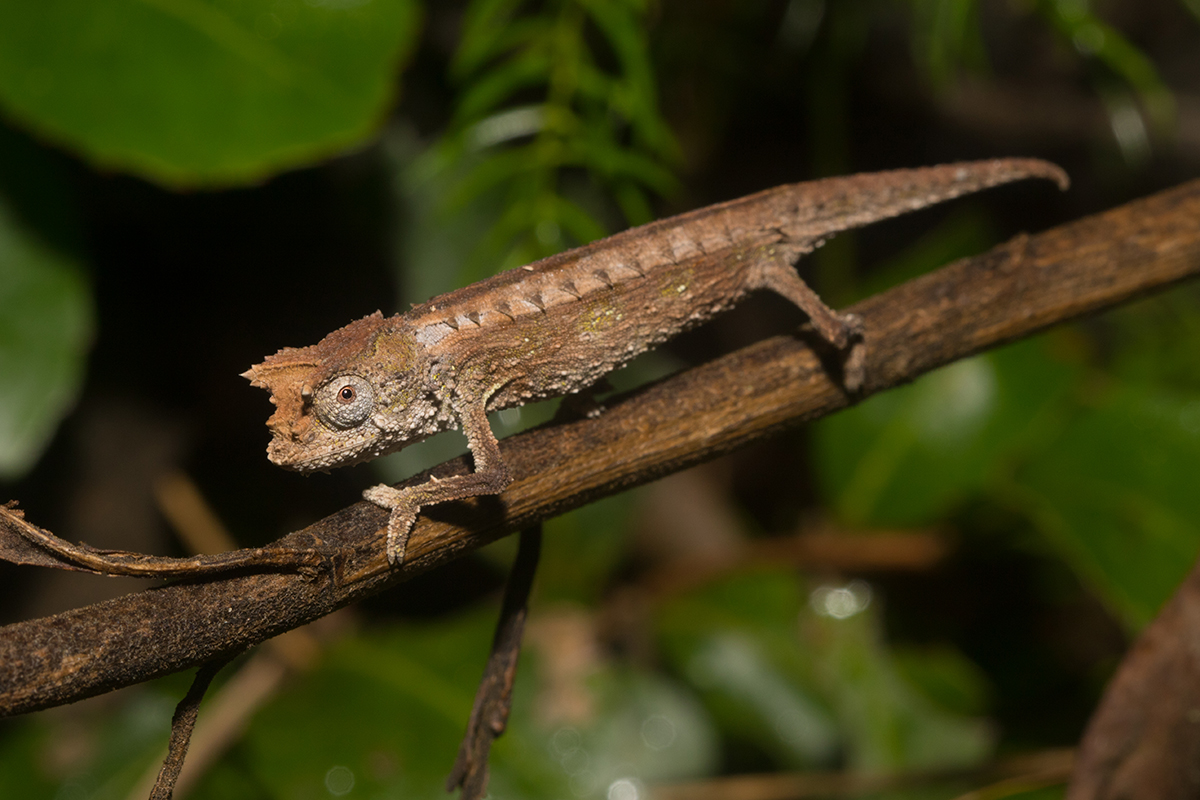In Madagascar’s eastern highlands, farmland for rice fields is mainly obtained by slashing and burning primary forests or secondary vegetation. The rice fields are only used for one season. The following year the field is used for root vegetables. After just one harvest, the land lies fallow for up to five years before it is slash-and-burned again to grow rice again. Just five of these cycles can turn fertile land into degraded. In recent decades, fallow land has been cleared at ever shorter intervals. This practice has allowed invasive, non-native plant species to spread, while Malagasy plants that depend on primary forest have disappeared. Malagasy scientists have now investigated the impact of this form of agriculture on chameleons on the east coast of Madagascar.
The Ankeniheny-Zahamena rainforest corridor in the eastern highlands was used as the object of study. It runs along the east coast of Madagascar over an area of around 5000 km², some of which are only connected by very narrow forest fragments. A total of 44 sites were investigated during the rainy season, which were categorised into five habitat types: Ten sites with closed canopy rainforests, eight with tree fallows, eleven with shrub fallows, ten sites after at least five slash-and-burn cycles (degraded land) and five sites where reforestation was practised. The majority of chameleons were searched for, identified and measured at night along predefined transects (three to four parallel lines each 50 metres long).
A total of 15 chameleon species of the genera Brookesia, Furcifer and Calumma were found, although three species could not be precisely identified (as far as recognisable, these are animals from the Calumma nasutum/emelinae complex). Most chameleons favoured closed rainforest, whereas significantly fewer animals and species were found after slash-and-burn clearing. In forest areas with reforestation efforts, the number of chameleons was significantly higher than in degraded areas. Both emphasise the need to protect remaining rainforests as well as the relevance of reforestation in Madagascar.
Six species (including Calumma cf. vencesi, Brookesia superciliaris, Brookesia therezieni, Calumma parsonii) were clearly more sensitive to agriculture and can probably only survive to a very limited extent outside primary forest. Only three species were found on intensively farmed land, of which only Furcifer lateralis was most frequently found there.
Effects of shwidden agriculture on chameleon diversity and abundance in eastern tropical rainforest in Madagascar
Rodlis Raphali Andriantsimanarilafy, Joseph Christian Randrianantoandro, Josué Rakotoarioa, Alain Jean Victorien Rakotondrina, Ruth Kelly, Alison Cameron
Sustainability and biodiversity conservation 3(2): 99-118.
DOI: 10.5281/zenodo.13861065
Photo: Carpet chameleon at the edge of a rice field in Madagascar, photographed by Alex Negro



